How To Load Monthly Data In Tableau
This article shows the necessary steps to chop-chop and hands load weather forecast data for any location of the world into Tableau Desktop for farther analysis. The tutorial shows pace-by-pace how to construct the query in the Visual Crossing Atmospheric condition web interface and then import the weather forecast results every bit csv file into Tableau Desktop.
If you are interesting in how to import historical weather data into Tableau, be certain to check out our 2nd web log describing how to import atmospheric condition history information into Tableau.
Pace 1 – open Visual Crossing Weather condition Information Services
Open the Visual Crossing Weather Data Services log-in page and sign into your Visual Crossing Conditions account. If you lot don't already have an business relationship, yous can sign up for a gratis trial on the same page. Signing up for a free trial account will give you immediate access to a full 15-day weather forecast for whatever location.
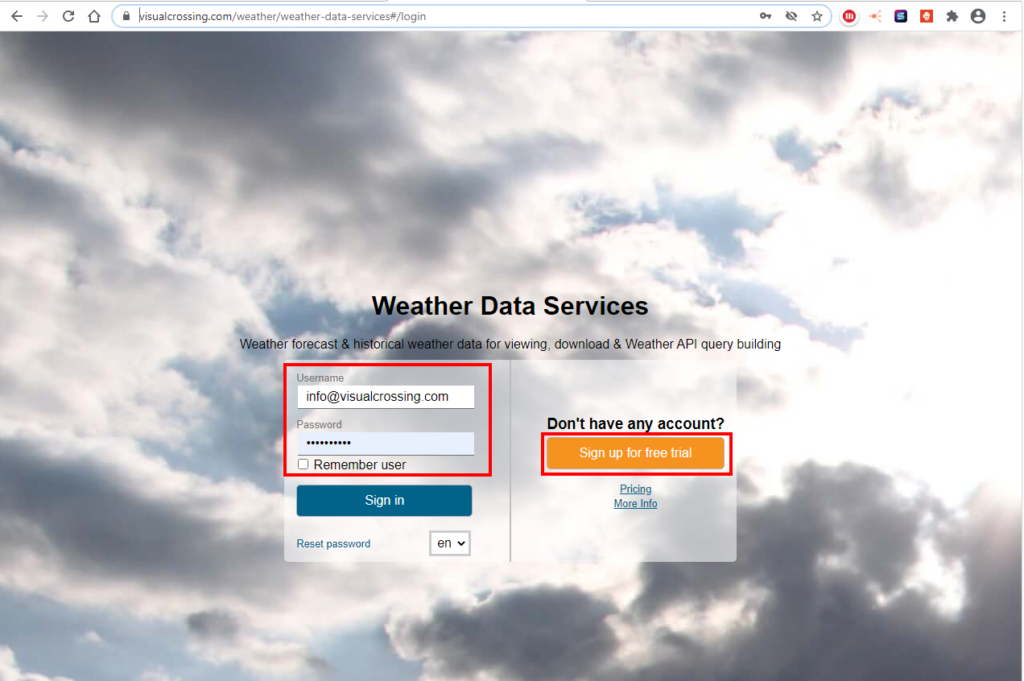
Step 2 – specify your locations
The showtime page will prompt y'all to add the locations to recall the weather condition forecast for. In that location are two options in the web interface to manually add locations. As direct entry of either the physical accost in articulate text or as bulk entry in form of a file upload. The following steps refer to the file upload option – for more details please see the Visual Crossing Weather Data Tutorial department
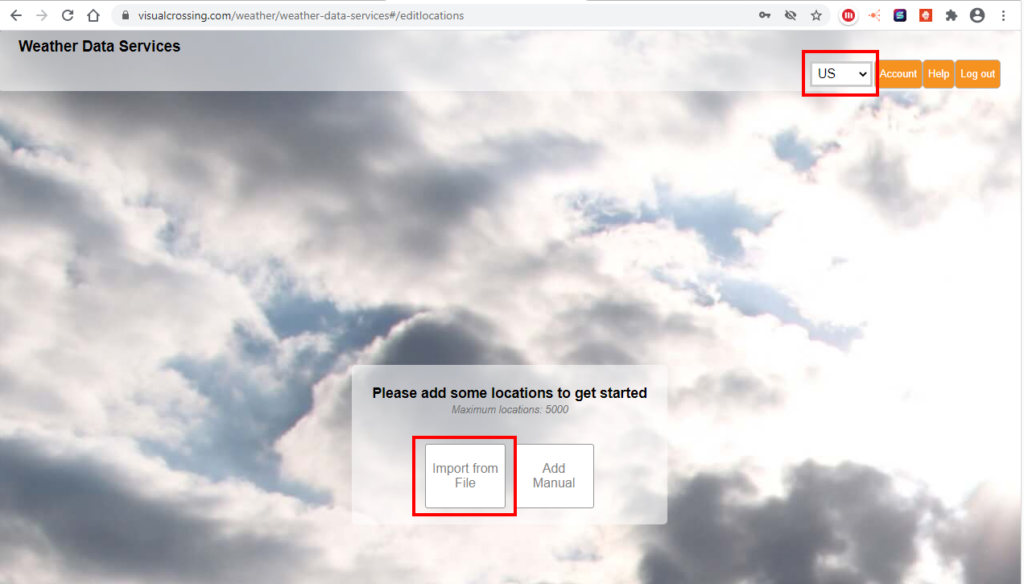
Step 3 – import locations from a file
The next screen will prompt you to select the file containing your locations of interest. You can scan to the file on your difficult deejay. simply drag an drib it to the corresponding section or paste the content directly into the web page.
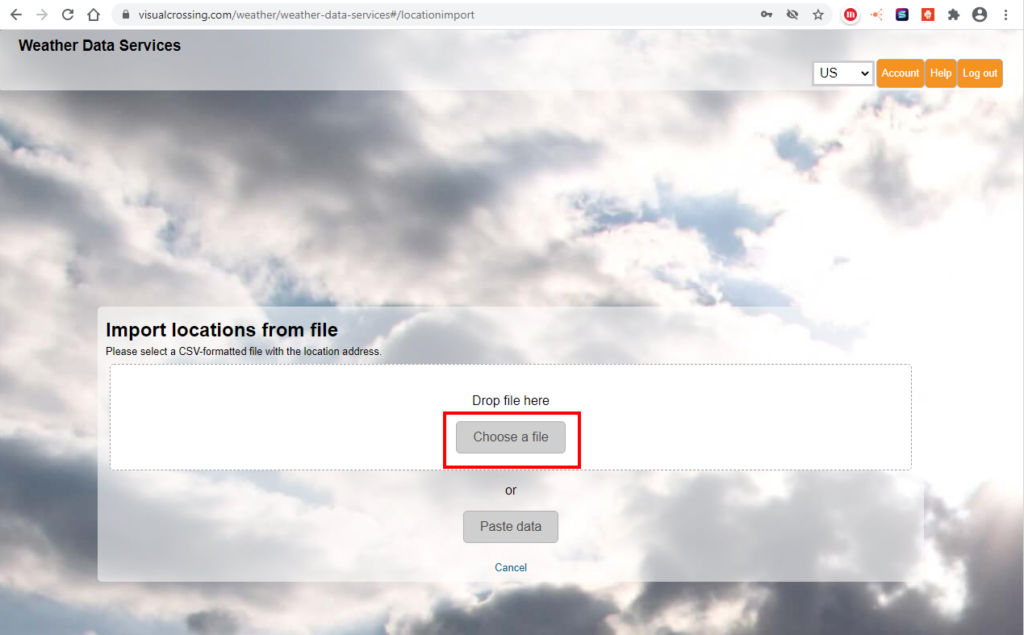
Step four – configure the location data
In the 'Select the correct columns' course, select the the accost and the name column of your data set. For the forecast you can ignore the date column which refers to the retrieval of historical data. The address tin be a Latitude / Longitude pair every bit well as simply address, a urban center name, or a postal code. For convenience you encounter a preview of your information set. In one case finished press the 'Add new data' button at the lesser
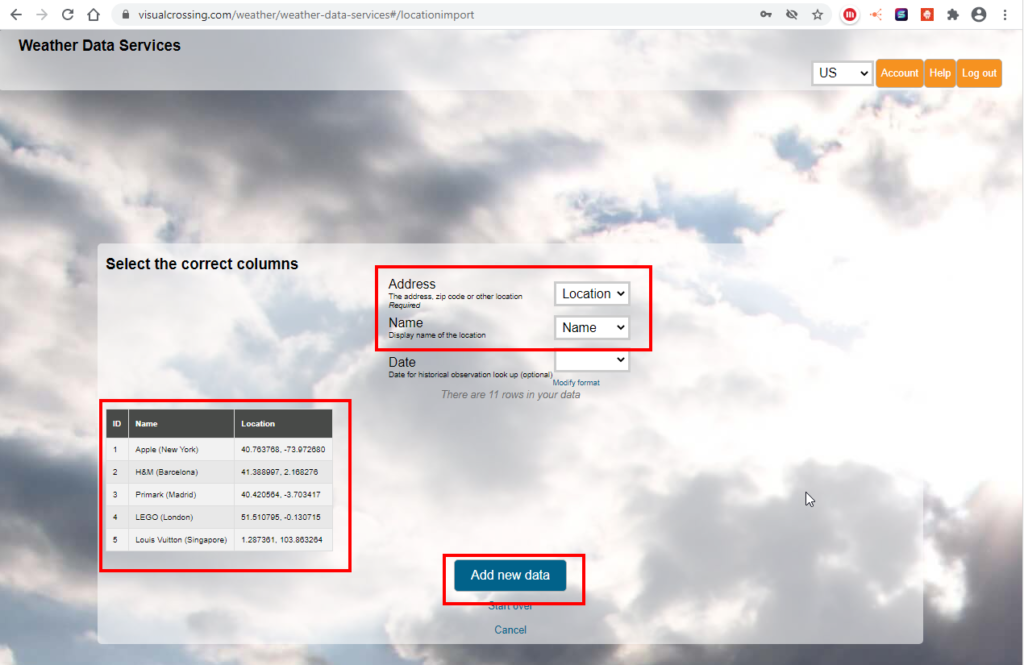
Step five – Request Conditions Forecast Data
On the adjacent folio you tin can select the type of data you lot desire to download.
The options are forecast, weather condition history queries, historical information summary reports, and hourly information. This tutorial will go on with the daily forecast pick. Please see those or reach out to us if you need more information on the other options or browse our tutorial and video section for more details.
Select the forecast option and click the 'Request Weather Data' button.
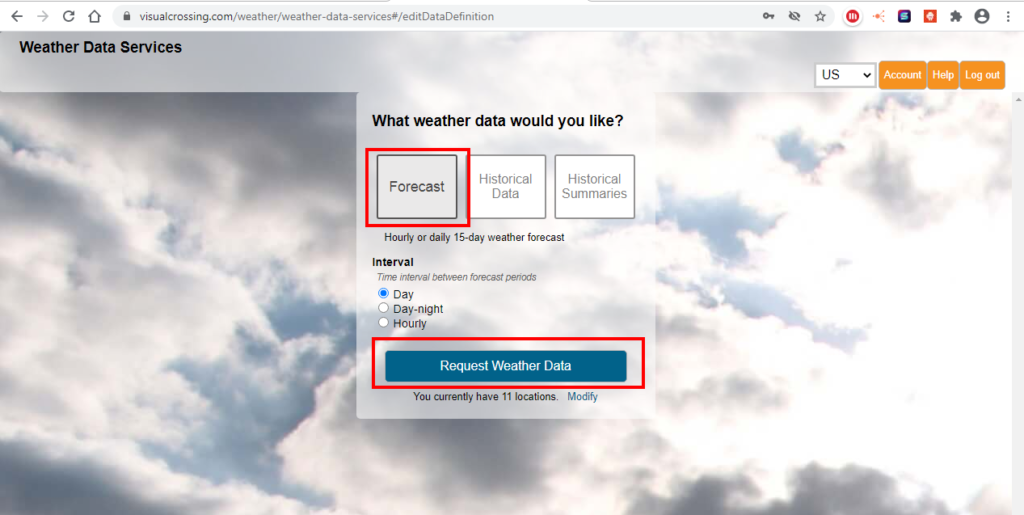
Step 6 – view and download the weather forecast information
The default view for the query results is the atmospheric condition calendar. This view provides a simple overview of the result data. To further analyze the data you will need to download the full data gear up by clicking the 'Download all data' push.
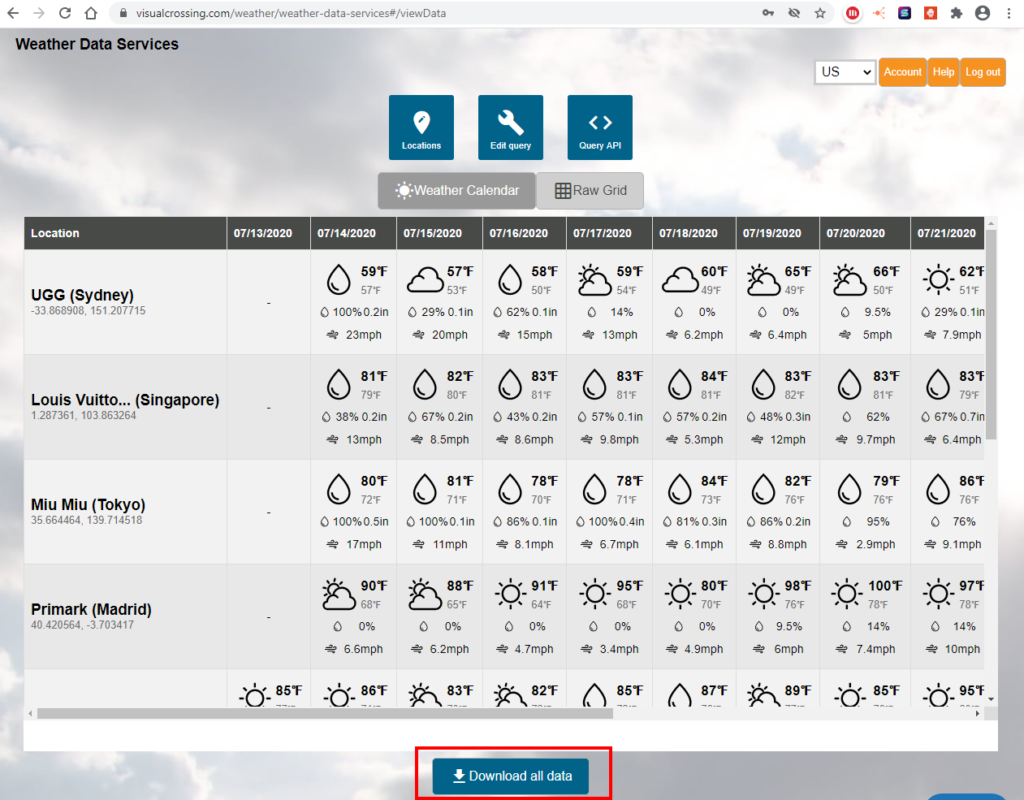
Step vii – start Tableau Desktop
Once you take the information downloaded into a CSV file, you can load it directly into Tableau Desktop. To start the analysis kickoff launch your Tableau application.
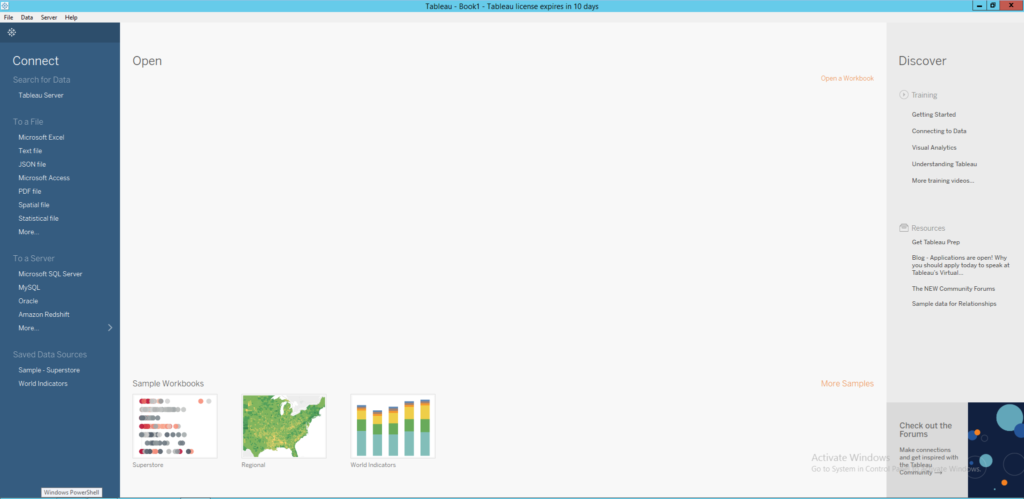
Footstep 8 – import the weather forecast information into Tableau
You side by side need to load the data file into Tableau. So cull the 'Open…" option from the 'File' bill of fare.
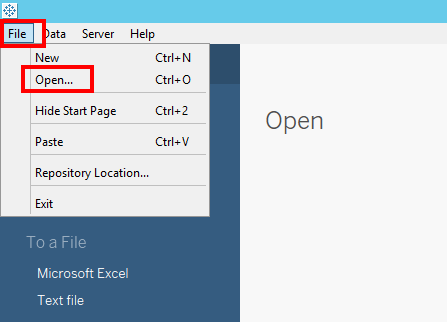
The file chooser will open up and allow you lot to select the input information file for analysis. for this example, select the .csv file containing the forecast data downloaded in Step six.
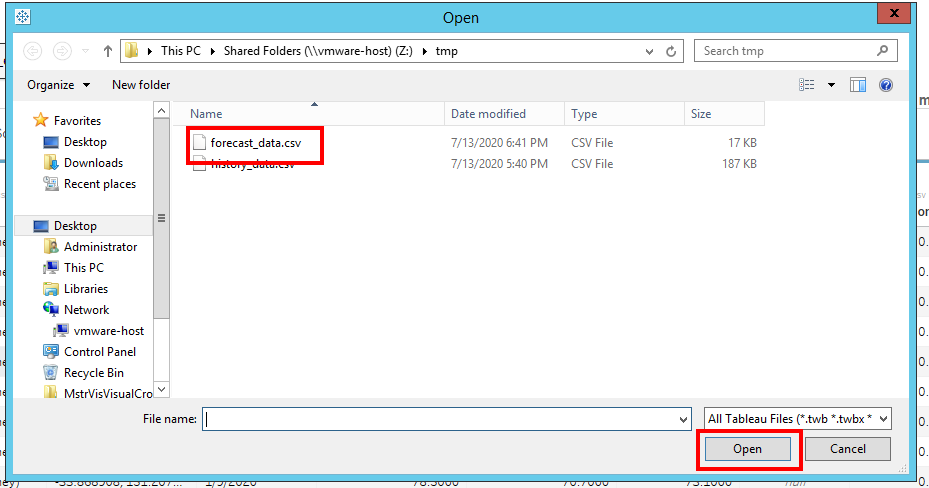
Step 9 – configure the weather forecast data
Tableau Desktop now displays the full data set containing forecast metrics for the next 15 days. The metrics include common values such as temperature, atmospheric precipitation, and current of air as well equally less mutual value such as rut alphabetize, deject cover and wind gusts. For more than data on the details regarding our weather metrics, please see our Atmospheric condition Data Documentation.
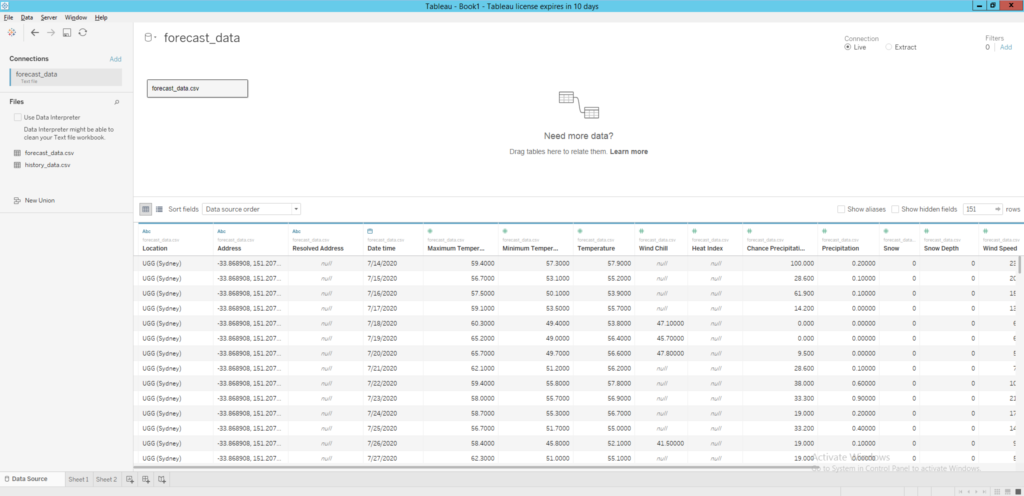
Step 10 – create weather condition data analysis
Now that the weather data is loaded into Tableau, you tin can begin your business analysis. You can bring all of the normal Tableau analysis tools to bear while you combine weather data and your existing business values. Like in the below instance visualizing the tracking of rain events.
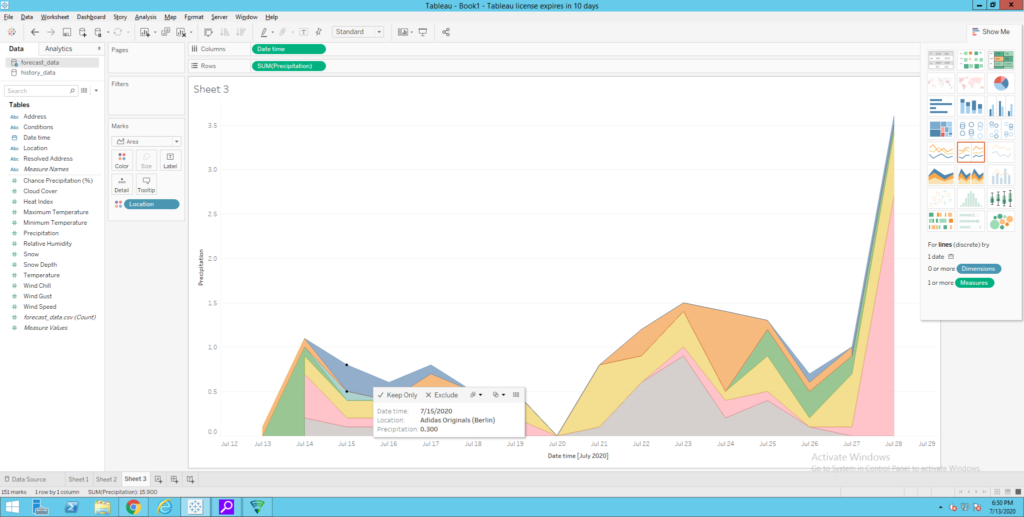
If you lot would similar to acquire more than about using Visual Crossing Conditions options such every bit history information, multiple location import, and use within other analysis tools delight see our other tutorials.
How To Load Monthly Data In Tableau,
Source: https://www.visualcrossing.com/resources/documentation/weather-data-tutorials/how-do-i-load-weather-forecast-data-into-tableau-desktop/
Posted by: shiresplesn1976.blogspot.com


0 Response to "How To Load Monthly Data In Tableau"
Post a Comment